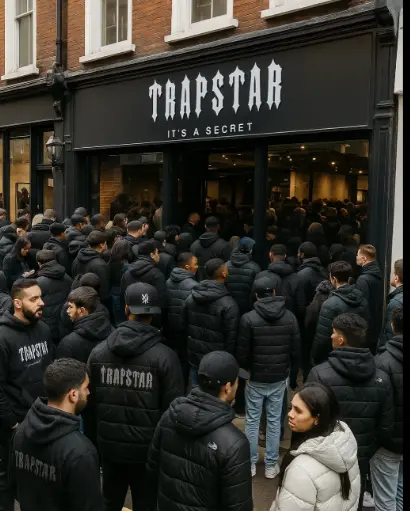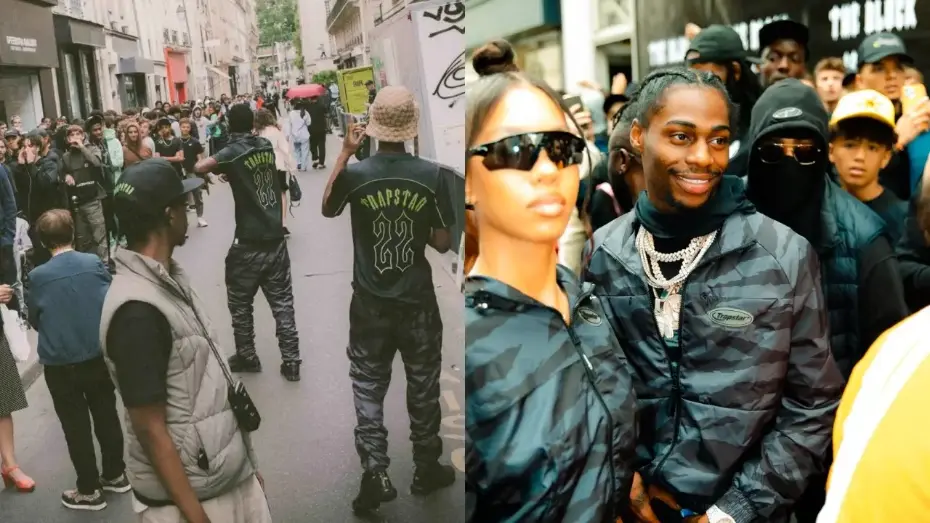History of UK Streetwear Fashion: From the Underground to Trapstar London
“Streetwear isn’t just fashion — it’s a culture born from struggle, sound, and street smarts.”
From the dimly lit alleyways of Brixton to high-end boutiques in Soho, UK streetwear has carved its place in fashion history — one oversized hoodie at a time. While America often gets credit for launching the streetwear movement, the British streetwear scene has long had a sound and style all its own.
At the heart of this culture now stands a brand that began on the streets of West London: Trapstar London — a label that transformed raw street energy into an international symbol of urban identity.
The Birth of Streetwear in the UK
Streetwear in the UK emerged in the 1980s and 1990s, deeply rooted in music, rebellion, and counterculture. Influenced by American hip-hop, British punk, and reggae beats from Caribbean immigrants, the youth began dressing in ways that reflected both defiance and belonging.
The original UK streetwear wasn't polished. It was DIY, thrifted, bold, and often customized. Baggy denim, puffer jackets, bucket hats, Air Max trainers, and graphic tees became symbols of expression. These weren’t runway pieces — they were survival statements.
Music and Rebellion: The Real Fuel Behind the Fashion
Streetwear in the UK can’t be discussed without the impact of music genres like Grime, UK Garage, and Drill. Artists like Dizzee Rascal, Wiley, and Skepta weren’t just redefining sound — they were shaping fashion.
Their clothing choices, from tracksuits to oversized jackets, quickly became street trends. The hooded look, once seen as threatening, evolved into a uniform of identity for the British youth — particularly those in underrepresented communities.
This music-fashion relationship helped build the foundation for brands like Trapstar London, who would later become a part of this very narrative.
Streetwear Goes Mainstream: The 2000s Era
The early 2000s saw a shift. Streetwear moved from street corners to skate parks, from rap videos to music festivals. Global fashion houses started borrowing street styles, but the UK remained unique with its gritty edge and London-specific attitude.
During this time, British youth demanded more than just branded sportswear. They wanted something that felt like them — authentic, unfiltered, and raw. That’s where Trapstar London made its entrance.

Trapstar London: The Brand That Spoke the Truth
Launched by friends in West London, Trapstar London wasn’t built in a boardroom. It started from home-made t-shirts sold in barbershops and out of car trunks. The idea was simple yet powerful: you can be a star even from the trap — a metaphor for struggle, hustle, and survival.
The brand's early success came from word of mouth, exclusive drops, and a rebellious design language. With slogans like “It’s A Secret”, Trapstar wasn’t just selling clothes — it was building a movement.
🌍 Trapstar London Goes Global
Over the years, Trapstar London became more than a local brand. It drew attention from international celebrities like Rihanna, A$AP Rocky, Jay-Z, and Stormzy, all seen rocking Trapstar gear.
Their designs — blackout jackets, barbed wire logos, heavy typography — stood out. They weren't just trendy; they were statements.
“To explore the full collection and learn what Trapstar really stands for, visit Trapstar London — the global voice of UK streetwear.”
In 2015, Trapstar partnered with Puma, and by 2017, it was showcasing pieces during Paris Fashion Week. But through all the expansion, the brand has never lost its street identity — a rare trait in today’s commercial fashion space.
🗓️ Timeline of UK Streetwear Evolution
Year |
Evolution |
1980s |
Influences from punk, reggae, and early hip-hop styles begin shaping local fashion |
1990s |
Emergence of DIY clothing, Nike culture, and garage style |
Early 2000s |
Streetwear blends with music (Grime), youth embrace brands like Adidas, Nike, and Carhartt |
Mid 2000s |
Rise of independent labels like Trapstar clothing becomes symbolic of voice and culture |
2010s–Now |
UK streetwear goes global; Trapstar collaborates with Puma, gains celebrity followers |
📸 [Insert image prompt: Timeline graphic showing fashion change in UK from 1980s to 2020s]
📈 Trapstar’s Cultural Relevance Today
In today’s fashion ecosystem, many brands lose touch with their roots once they grow. Not Trapstar London. The brand has maintained its focus on real people, real struggle, and real identity.
Whether it’s a Trapstar windbreaker or tracksuit, the look says something — that you’re bold, aware, and from a place that can’t be ignored.
“Whether you’re into statement pieces or minimalist urban wear, Trapstar London offers clothing that connects with your story.”
🧠 Why Streetwear Still Matters in the UK
In a time where fast fashion dominates shelves, UK streetwear still holds power because it connects with people emotionally. It gives voice to communities, allows for creativity, and breaks the barrier between luxury and local.
Modern British streetwear reflects cultural fusion — African prints, Jamaican color palettes, South Asian influences — all woven into designs that represent modern London.
Brands like Trapstar are keeping this energy alive. They don't just follow trends — they create culture.

💬 Final Thoughts: Trapstar as a Legacy, Not Just a Label
From backstreets to billboards, the journey of UK streetwear is nothing short of iconic. And standing at the frontline of that journey is Trapstar London — a brand that rose from struggle and found its place on the global stage.
The beauty of Trapstar lies in its message: You don’t need privilege to be powerful. You don’t need a runway to shine.
“Join the movement. Represent the streets. Shop now at Trapstar London.”